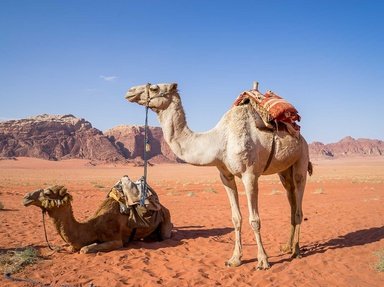Quiz Answer Key and Fun Facts
1. What biological family does the alpaca belong to?
2. What region(s) do alpacas originate from?
3. Alpacas are still found in the wild.
4. What are the main reasons to domesticate alpacas?
5. Please enter one of the two main food sources an alpaca feeds on.
6. Do alpacas need shearing? And if so, how often?
7. Although they are related to llamas, alpacas do not spit.
8. On average, how long does a healthy alpaca live?
9. What is the young of an alpaca called?
10. An alpaca's gestation period is approximately the same length as which other animal?
Source: Author
froggyx
This quiz was reviewed by FunTrivia editor
guitargoddess before going online.
Any errors found in FunTrivia content are routinely corrected through our feedback system.

